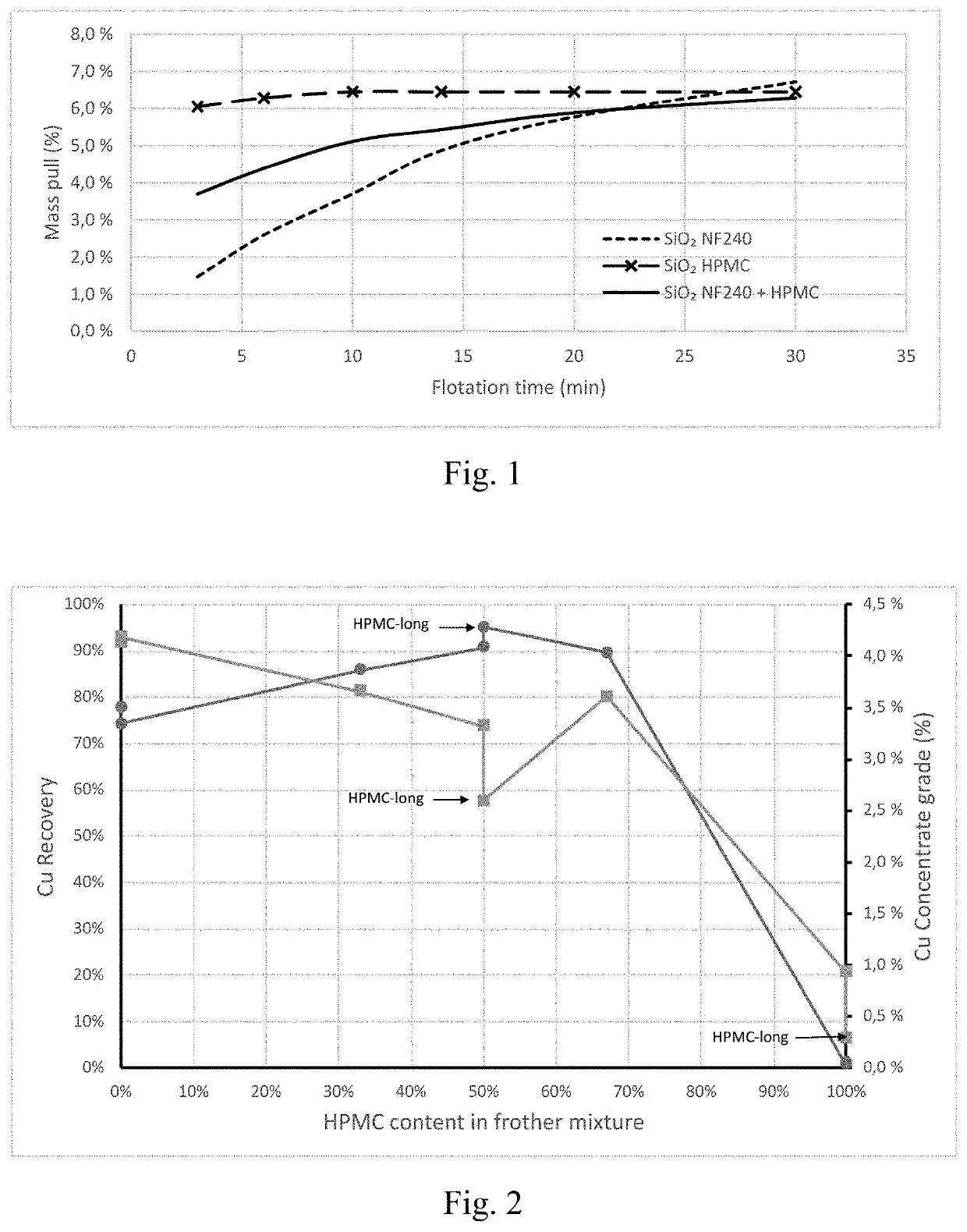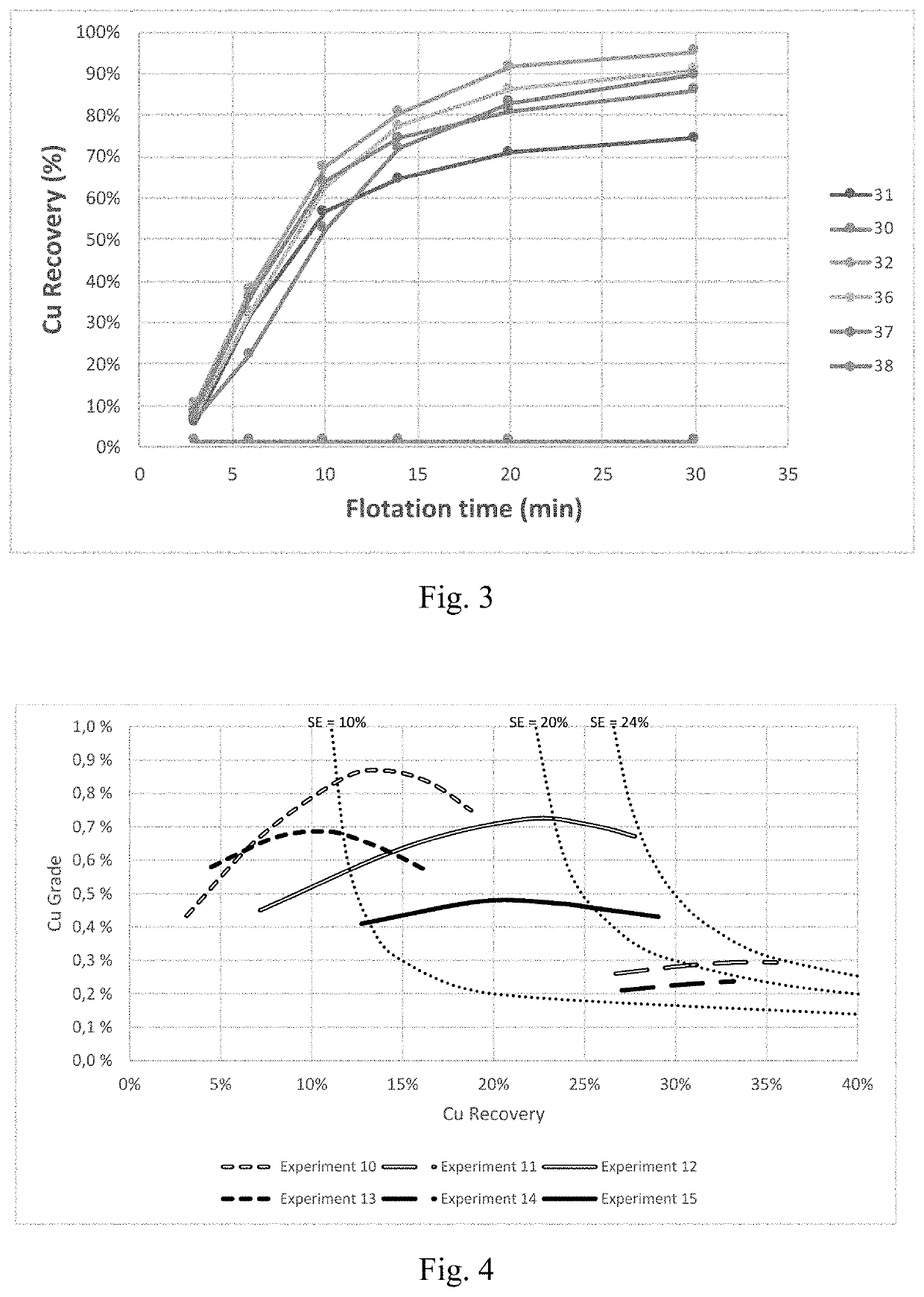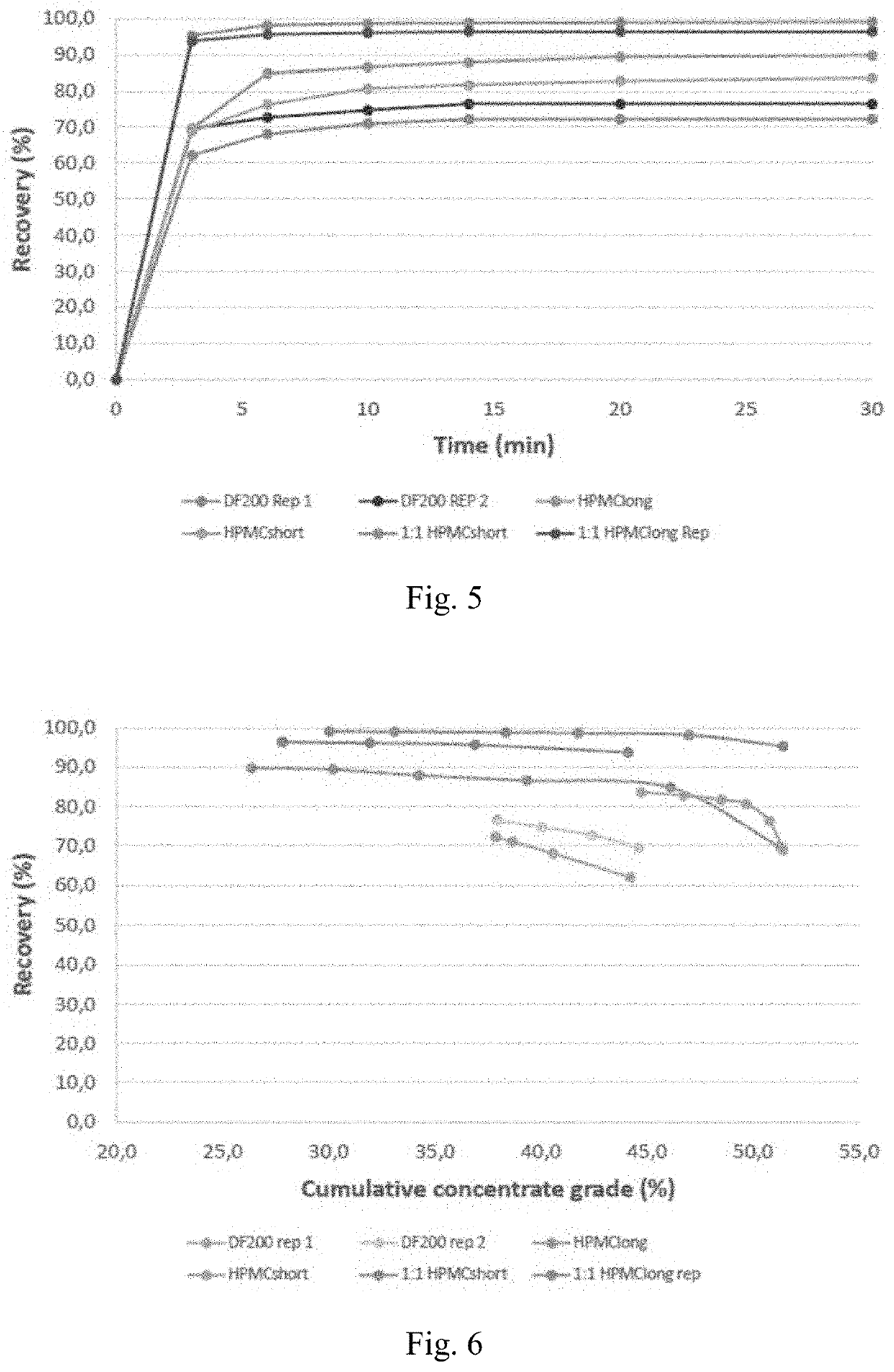Cellulose-based derivatives as chemical aids for mineral enrichment in froth flotation
a technology of cellulose and derivatives, which is applied in the direction of flotation, solid separation, silicon, etc., can solve the problems of increasing the risk that state-of-the-art (soa) technologies will not be able to meet this rising demand, mining industry needs to process ever larger quantities of low-quality extracted materials, and valuable minerals in tailing ponds are still uneconomical to process using soa technologies. achieve the effect of high recovery, high production capacity and synergy
- Summary
- Abstract
- Description
- Claims
- Application Information
AI Technical Summary
Benefits of technology
Problems solved by technology
Method used
Image
Examples
example 1
of Quartz
[0075]In a flotation experiment, quartz particles with a d50 of approximately 160 μm and a d80 of approximately 240 μm were dispersed in water down to a solids content of 33% and floated using a laboratory scale flotation cell. Three frother formulations were tried, using the same total concentration of 30 ppm: i) a commercially used polyethylene glycol with formulation C4H9(C2H4O)3OH, namely Nasfroth 240 (NF240); ii) hydroxypropyl methyl cellulose (HPMC); and iii) a mixture of NF240 and HPMC at a 1:1 mass ratio. The entrainment tendencies of the frother systems are illustrated in FIG. 1.
[0076]As it can be seen from FIG. 2, while the recovery of quartz after 30 min was practically the same with the three formulations explored, the kinetics of flotation were significantly different. As an example, we can see that after 5 min, the quartz recovery with HPMC has reached a value of ca. 6.3%, while at the same point in time, the recovery using commercial NF240 was of only 2.6%. T...
example 2
of Copper Ores
[0077]A series of flotation experiments were carried out on a natural porphyry copper ore. In these experiments, 5 different frother formulations were tested: i) a commercially used polyethylene glycol ether with formulation C4H9(C2H4O)3OH, namely Nasfroth 240 (NF240); ii) hydroxypropyl methyl cellulose with an average molecular weight of 2.2 kDa (HPMC-long); iii) a mixture of NF240 and HPMC-long at a 1:1 mass ratio; iv) hydroxypropyl methyl cellulose with an average molecular weight of 1.2 kDa (HPMC-short); and v) a mixture of NF240 and HPMC-long at a 1:1 mass ratio. In all cases, the total concentration of frother species used was of 30 ppm.
[0078]Flotation experiments were conducted in an Outokumpu 1.5 L laboratory scale flotation cell. In all cases, the flotation cell was operated using the parameters presented in Table 3.
[0079]First, the required quantities of mineral and water were measured and added to the flotation cell to obtain a solids content of 50 w-%. The ...
example 3
of Copper Ores Using Various HPMC-Polyglycol Ester Ratios
[0083]A series of flotation experiments were carried out on a natural porphyry copper ore. Flotation experiments were conducted in an Outokumpu 1.5 L laboratory scale flotation cell. In all cases, the flotation cell was operated using the parameters presented in Table 2.
TABLE 2Operating conditions of flotation experimentsParameterValueAir flow rate4 l / minImpeller speed1300 rpmFlotation time30 minSolids content33%Total volume of suspension1.51
[0084]First, the required quantities of mineral and water were measured and added to the flotation cell to obtain a solids content of 50 w-%. The samples were ground in a ball mill at well-defined time intervals with a solid content of 50 w-% before transferring the slurry into the laboratory-scale flotation cell. The particle size distribution obtained after milling had an 90% passing size (d90) of approximately 110 μm. Stirring in the flotation cell started with an impeller speed of 1300...
PUM
| Property | Measurement | Unit |
|---|---|---|
| Mw | aaaaa | aaaaa |
| molecular weight | aaaaa | aaaaa |
| average molecular weight | aaaaa | aaaaa |
Abstract
Description
Claims
Application Information
 Login to View More
Login to View More - R&D
- Intellectual Property
- Life Sciences
- Materials
- Tech Scout
- Unparalleled Data Quality
- Higher Quality Content
- 60% Fewer Hallucinations
Browse by: Latest US Patents, China's latest patents, Technical Efficacy Thesaurus, Application Domain, Technology Topic, Popular Technical Reports.
© 2025 PatSnap. All rights reserved.Legal|Privacy policy|Modern Slavery Act Transparency Statement|Sitemap|About US| Contact US: help@patsnap.com



